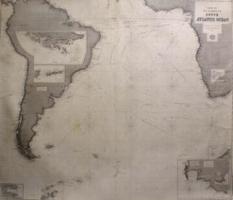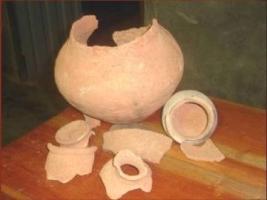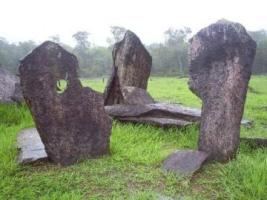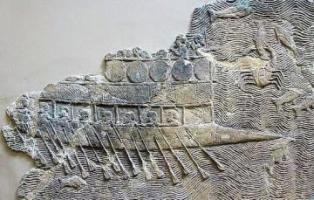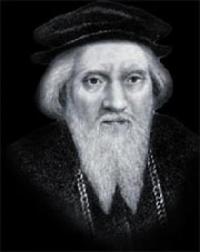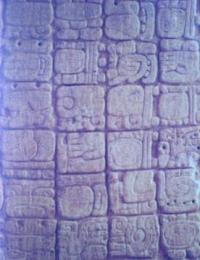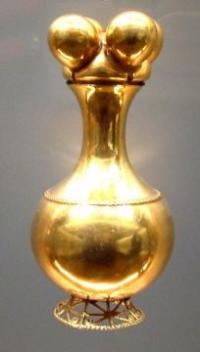Copy Link
Add to Bookmark
Report
dictyNews Volume 38 Number 07

dictyNews
Electronic Edition
Volume 38, number 7
March 2, 2012
Please submit abstracts of your papers as soon as they have been
accepted for publication by sending them to dicty@northwestern.edu
or by using the form at
http://dictybase.org/db/cgi-bin/dictyBase/abstract_submit.
Back issues of dictyNews, the Dicty Reference database and other
useful information is available at dictyBase - http://dictybase.org.
Follow dictyBase on twitter:
http://twitter.com/dictybase
=========
Abstracts
=========
Ca2+ signaling regulates ecmB expression, cell differentiation and
slug regeneration in Dictyostelium
Yekaterina Poloz and Danton H. O'Day
Differentiation, in press
Ca2+ regulates cell differentiation and morphogenesis in a diversity of
organisms and dysregulation of Ca2+ signal transduction pathways leads
to many cellular pathologies. In Dictyostelium Ca2+ induces ecmB
expression and stalk cell differentiation in vitro. Here we have analyzed
the pattern of ecmB expression in intact and bisected slugs and the
effect of agents that affect Ca2+ levels or antagonize calmodulin (CaM)
on this expression pattern. We have shown that Ca2+ and CaM regulate
ecmB expression and pstAB/pstB cell differentiation in vivo. Agents that
increase intracellular Ca2+ levels increased ecmB expression and/or
pstAB and pstB cell differentiation, while agents that decrease intracellular
Ca2+ or antagonize CaM decreased it. In isolated slug tips agents that
affect Ca2+ levels and antagonize CaM had differential effect on ecmB
expression and cell differentiation in the anterior versus posterior zones.
Agents that increase intracellular Ca2+ levels increased the number of
ecmB expressing cells in the anterior region of slugs, while agents that
decrease intracellular Ca2+ levels or antagonize CaM activity increased
the number of ecmB expressing cells in the posterior. We have also
demonstrated that agents that affect Ca2+ levels or antagonize CaM affect
cells motility and regeneration of shape in isolated slug tips and backs and
regeneration of tips in isolated slug backs. To our knowledge, this is the
first study detailing the pattern of ecmB expression in regenerating slugs
as well as the role of Ca2+ and CaM in the regeneration process and
ecmB expression.
Submitted by Danton H. O'Day [danton.oday@utoronto.ca]
--------------------------------------------------------------------------------------
A mechanosensory system governs myosin II accumulation in dividing cells
Kee YS, Ren Y, Dorfman D, Iijima M, Firtel RA, Iglesias PA, Robinson DN
Mol. Biol. Cell 2012, in press.
The mitotic spindle is generally considered the initiator of furrow ingression.
However, recent studies suggest that furrows can form without spindles,
particularly during asymmetric cell division. In Dictyostelium, the
mechanoenzyme myosin II and the actin crosslinker cortexillin I form a
mechanosensor that responds to mechanical stress, which could account
for spindle-independent contractile protein recruitment. Here, we show that
the regulatory and contractility network, composed of myosin II, cortexillin I,
IQGAP2, kinesin-6 (kif12) and INCENP, is a mechanical stress-responsive
system. Myosin II and cortexillin I form the core mechanosensor, and
mechanotransduction is mediated by IQGAP2 to kif12 and INCENP.
Additionally, IQGAP2 is antagonized by IQGAP1 to modulate the
mechanoresponsiveness of the system, suggesting a possible mechanism
for discriminating between mechanical and biochemical inputs. Furthermore,
IQGAP2 is important for maintaining spindle morphology and kif12 and
myosin II cleavage furrow recruitment. Cortexillin II is not directly involved in
myosin II mechanosensitive accumulation, but without cortexillin I,
cortexillin IIÕs role in membrane-cortex attachment is revealed. Finally, the
mitotic spindle is dispensable for the system. Overall, this mechanosensory
system is structured like a control system characterized by mechanochemical
feedback loops that regulate myosin II localization at sites of mechanical
stress and the cleavage furrow.
Submitted by Douglas Robinson [dnr@jhmi.edu]
--------------------------------------------------------------------------------------
Deconvolution of the cellular force-generating subsystems that govern
cytokinesis furrow ingression
Poirier C, Ng WP, Robinson DN, Iglesias PA.
PLoS Comp. Biol, in press.
Abstract: Cytokinesis occurs through the coordinated action of several
biochemically-mediated stresses acting on the cytoskeleton. Here, we
develop a computational model of cellularmechanics, and using a large
number of experimentally measured biophysical parameters, we simulate
cell division under a number of different scenarios. We demonstrate that
traction-mediated protrusive forces or contractile forces due to myosin II
are sufficient to initiate furrow ingression. Furthermore, we show that
passive forces due to the cellÕs cortical tension and surface curvature
allow the furrow to complete ingression. We compare quantitatively the
furrow thinning trajectories obtained from simulation with those observed
experimentally in both wild-type and myosin II null Dictyostelium cells.
Our simulations highlight the relative contributions of different
biomechanical subsystems to cell shape progression during cell division.
Submitted by Douglas Robinson [dnr@jhmi.edu]
==============================================================
[End dictyNews, volume 38, number 7]








